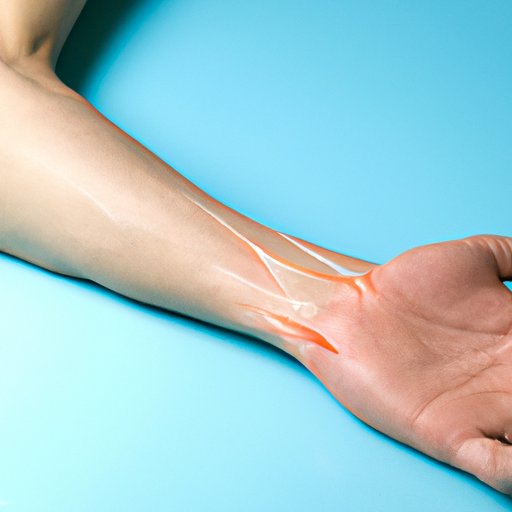
I. Introduction
Blood circulation is undeniably one of the most important processes that takes place in the human body. It helps distribute oxygen, nutrients, and minerals throughout the body while also removing waste and toxins. Poor circulation can thus lead to a range of health problems, including fatigue, numbness, and serious cardiovascular issues. Fortunately, there are several tips and strategies that can help improve blood circulation. Let’s take a closer look.
II. Focus on Diet and Nutrition
Eating the right foods can significantly improve blood circulation and overall health. Some foods, such as those rich in Omega-3 fatty acids, flavonoids, potassium, and magnesium, have been proven to increase blood flow. Examples of such foods include fish, dark chocolate, leafy greens, avocados, and bananas. Here is a simple diet plan that you can use:
- Breakfast – oatmeal with sliced banana and almonds
- Lunch – grilled salmon with a side salad topped with sliced avocado
- Snack – dark chocolate and blueberries
- Dinner – grilled chicken breast with roasted vegetables and quinoa
III. Exercise Routine
Regular exercise is essential for improving blood circulation. It promotes the growth of new blood vessels while also helping to keep existing vessels healthy and elastic. Yoga, walking, swimming, and weightlifting are great exercises that can increase blood flow to the muscles. The benefits of each exercise are:
- Yoga – improves flexibility and relieves muscle tension
- Walking – easy, low-impact exercise that works well for all fitness levels
- Swimming – provides a full-body workout while minimizing stress on the joints
- Weightlifting – helps build muscle and supports overall cardiovascular health
It’s important to note that consistency is key when it comes to exercise. Aim for at least 30 minutes of moderate-intensity exercise at least 3-4 times a week for optimal blood circulation.
IV. Stretching
Stretching allows muscles to loosen and relax, which can increase blood flow to those areas. Regular stretching also helps improve flexibility and reduce muscle stiffness. Simple stretches like neck rotations, shoulder shrugs, and calf stretches can be done anytime and anywhere. Here are a few easy-to-follow stretching routines:
- Neck and Shoulders – sit or stand and slowly roll your neck in a circular motion, then shrug your shoulders up towards your ears a few times.
- Hamstrings and Calves – stand up straight and extend one leg out in front of you while bending the other. Gently lean forward and hold for 30 seconds, then switch legs.
- Quadriceps – stand up straight and bend your knee, bringing your heel towards your butt. Use your hand to gently pull your foot towards your glutes and hold for 30 seconds. Repeat on the other leg.
V. Massage Therapy
Massage therapy can work wonders in improving blood circulation and providing relief from muscle tension. Swedish, deep tissue, and hot stone massages are all types of massage that can be helpful. When choosing a massage therapist, it’s important to do your research and read reviews to find a qualified and reputable practitioner. Additionally, communicating your concerns and expectations before the massage can help ensure that you receive the best possible experience.
VI. Medical Treatments
Medical treatments such as compression stockings or specific medications can also be effective in improving circulation. Compression stockings provide pressure to the legs, helping to improve blood flow, and are commonly used to treat conditions such as varicose veins or edema. Some medications, such as aspirin or blood-thinning drugs, help to prevent clotting and promote blood flow. It’s important to consult with a healthcare professional before starting any new treatments and to use them as prescribed.
VII. Conclusion
Improving blood circulation is crucial for maintaining good overall health. Eating a healthy diet, exercising regularly, stretching, receiving massage therapy, and following medical advice can all help improve circulation and prevent related health problems. By following these simple tips and strategies, you can help support your body in its natural processes and lead a healthier, happier life.





